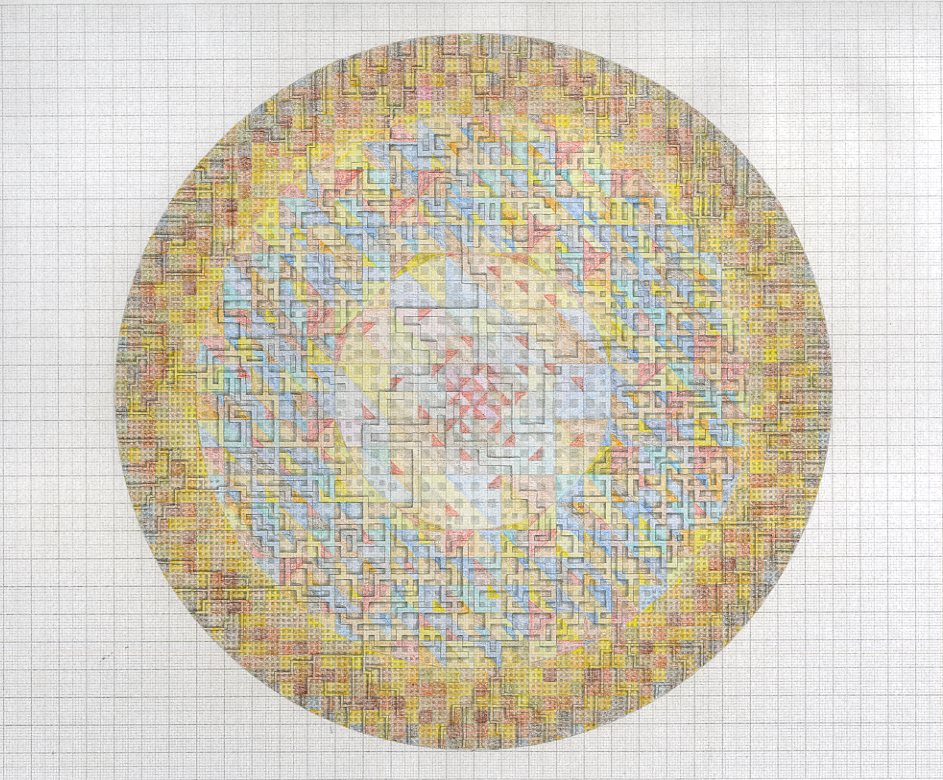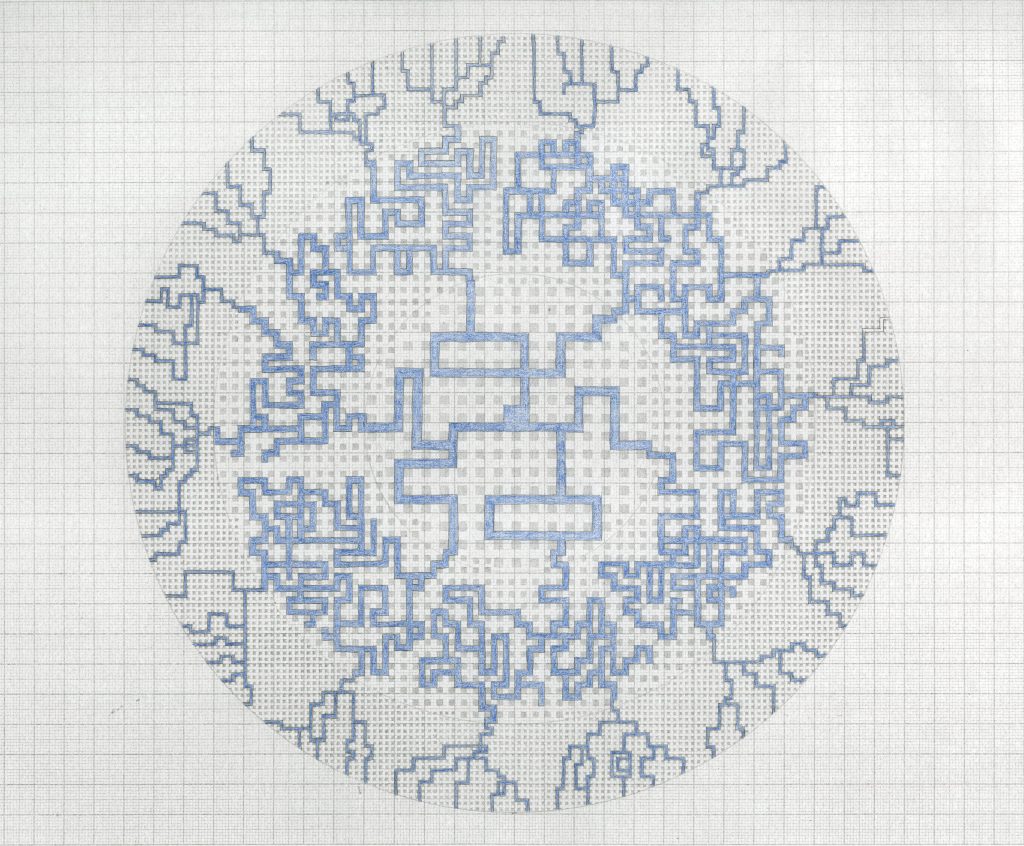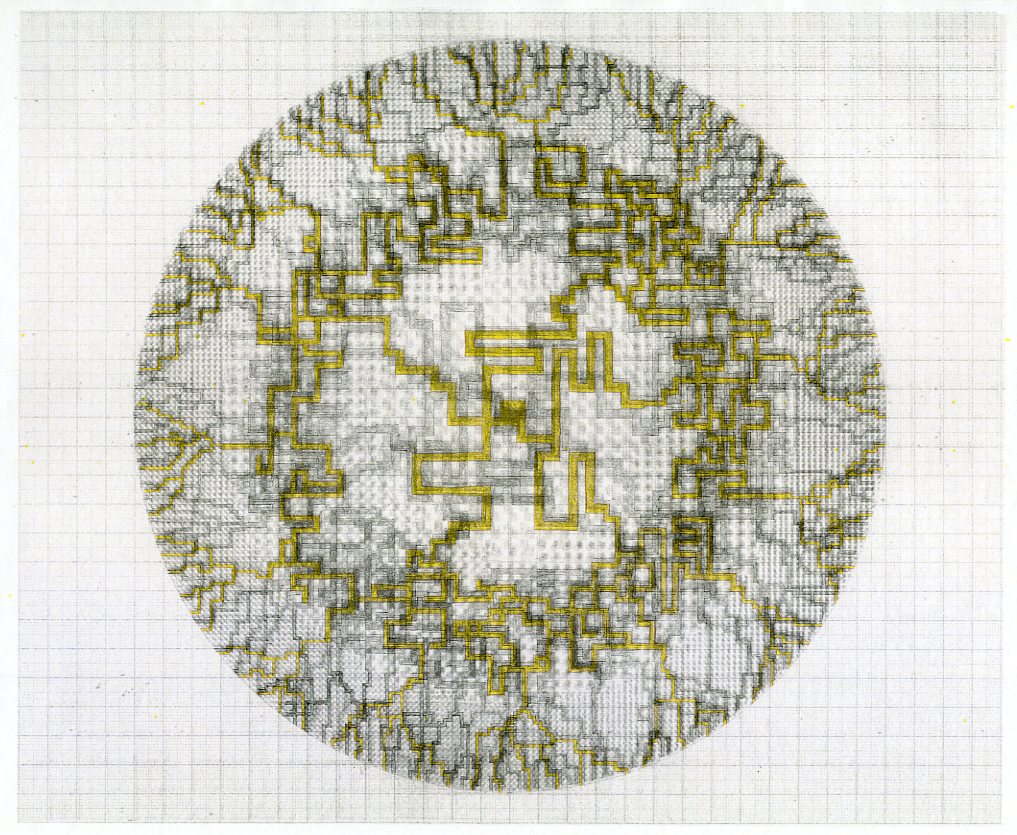In ‘The Botanical Revolution in Contemporary Art’, Kroller-Muller Museum, NL, 2022 and ‘The Botanical Mind’, Camden Art Centre, London, 2020
A single amino acid, a dot ( . ), becomes a chain of amino acids ( ….. ) – a protein, a line (——), moves in space to become a plane, then a volume. Like in drawing, a dot progresses to a line, to meander in space. So it seems that drawing might be an appropriate way to experiment, to ‘be like’ the protein.
‘Organic development in a work of art is at least analogous to, and probably identical with, organic development in nature; in an organic-artistic scheme the essence of art is in processes rather than its products; and such artistic ‘events’ as are thrown up are significant merely in that they reflect past, present and future aspects of the dominant process’. (Thistlewood, 1981)












